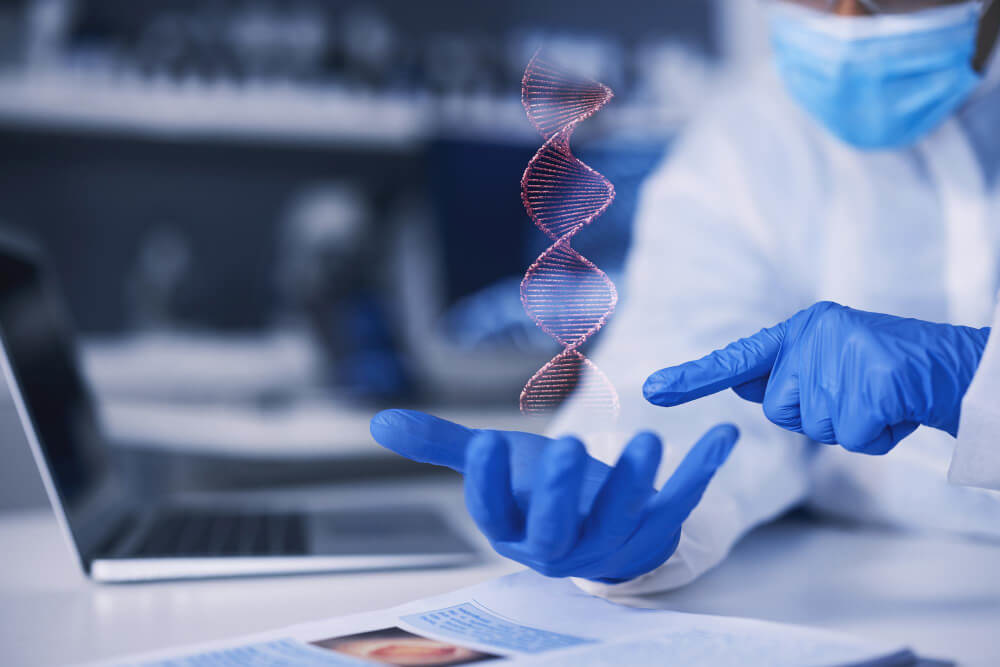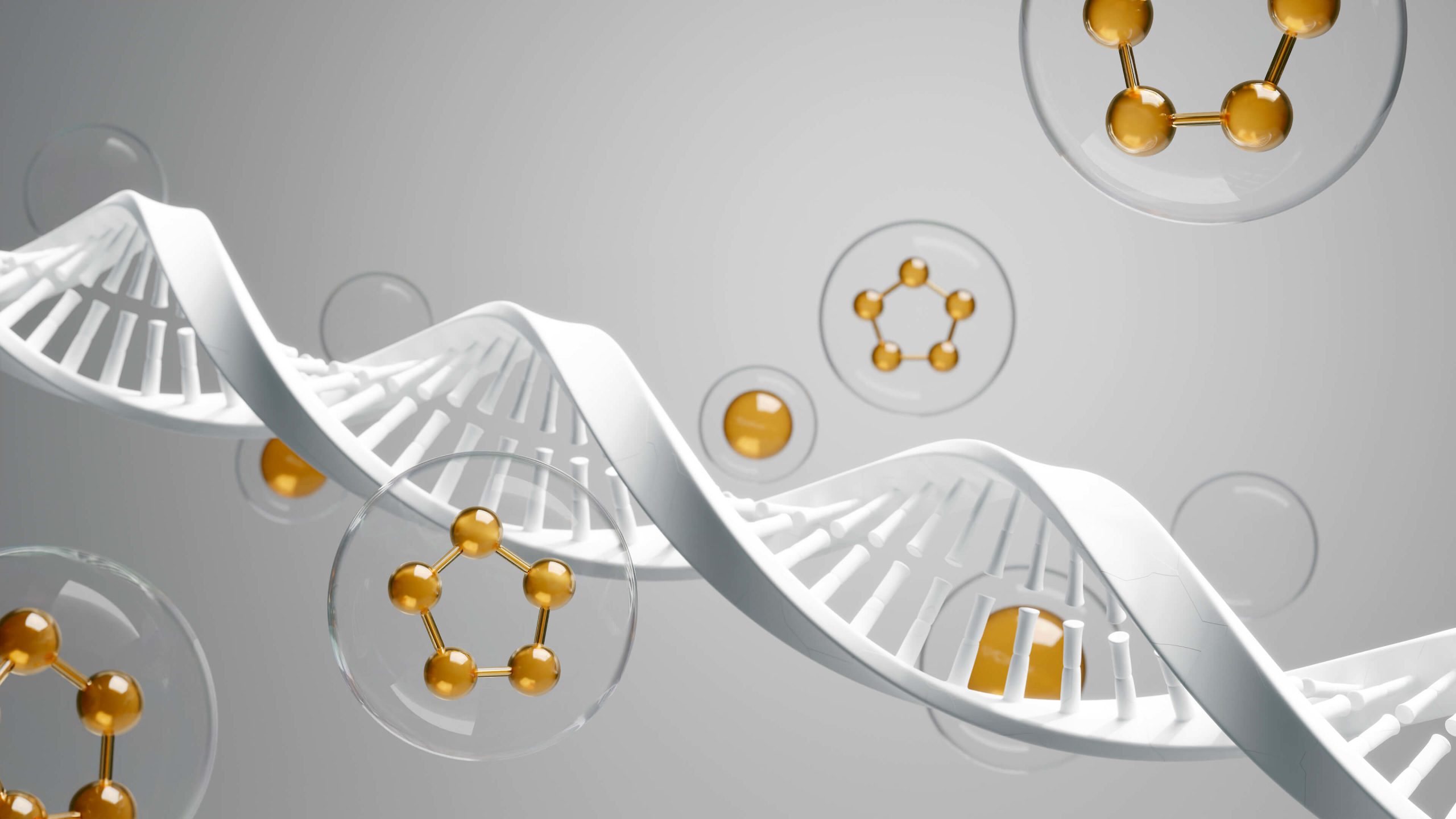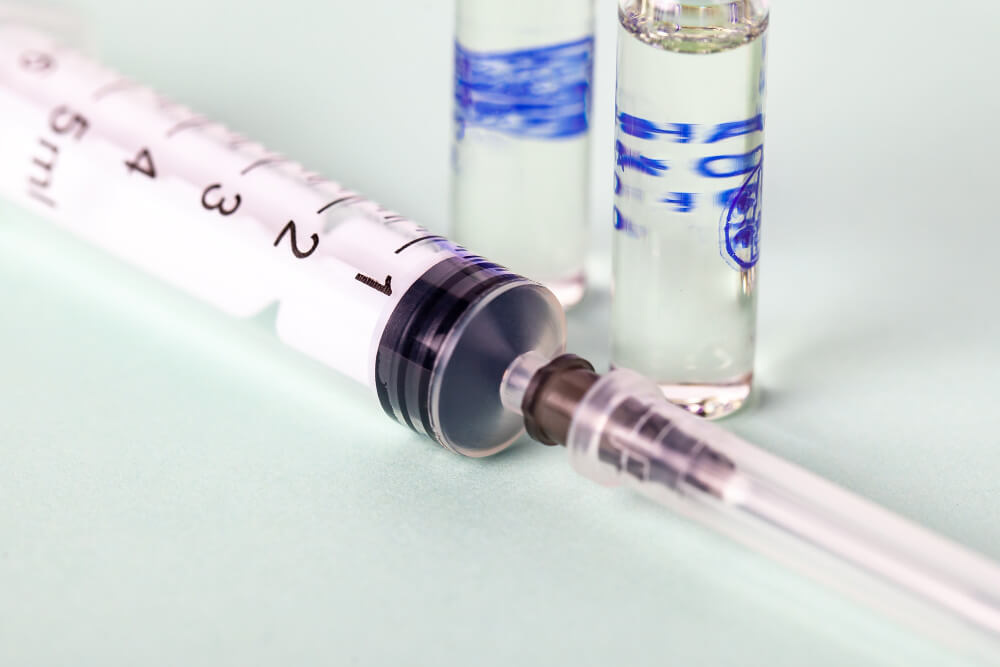Regenerative Medicine: The Ultimate Guide to Healing From Within
Imagine a form of medicine that does not just mask symptoms or manage chronic conditions. Picture a healthcare approach that works with your body’s innate abilities, empowering it to repair, rebuild, and restore itself on a cellular level. This is not science fiction; this is the revolutionary promise of regenerative medicine.
This rapidly advancing field represents a fundamental shift in how we think about disease, injury, and the aging process. Instead of simply treating the effects of damage, it aims to address the root cause by harnessing the body’s own powerful healing mechanisms. The goal is to regenerate damaged tissues and organs, offering hope for conditions once considered permanent.
As we explore this exciting frontier, it becomes clear that understanding regenerative medicine is key to understanding the future of health and longevity. It moves beyond conventional treatments to offer a new paradigm of healing from within, one that could redefine what is possible in medical science.

How Does Regenerative Medicine Actually Work?
At its heart, regenerative medicine is about amplifying the body’s natural repair systems. When you get a paper cut, your body immediately initiates a complex cascade of events to heal the wound. It sends signaling molecules, recruits repair cells, and builds a new tissue framework. Regenerative therapies are designed to concentrate and direct these processes with much greater precision and power.
This approach is built on a foundation of three core components that work in synergy: the cells that do the building, the signals that direct them, and the structures that support them. By understanding and utilizing these elements, scientists and clinicians can encourage healing in ways that were previously unimaginable. It is a proactive, restorative strategy rather than a reactive, symptomatic one.

What Are Stem Cells?
Stem cells are the body’s master cells, the fundamental building blocks of every tissue and organ. What makes them so special is their unique potential. They are ‘undifferentiated’, meaning they have not yet become a specific cell type like a skin cell, a muscle cell, or a nerve cell. This blank-slate status allows them to transform into whatever cell is needed.
There are different types of stem cells, but the ones most commonly used in regenerative therapies today are adult stem cells, such as mesenchymal stem cells (MSCs). These can be found in various tissues like bone marrow, fat tissue, and umbilical cord tissue. When introduced to an injured area, they can differentiate into the needed cell types and release powerful anti-inflammatory and signaling molecules that orchestrate the repair process.

What Role Do Growth Factors Play?
If stem cells are the workers on a construction site, growth factors are the foremen giving instructions. These are naturally occurring proteins that bind to cell surfaces and send signals to ‘grow’, ‘divide’, or ‘differentiate’. They are essential for normal development and for healing after an injury.
Regenerative therapies often use a concentrated dose of these growth factors to supercharge the healing environment. For example, Platelet-Rich Plasma (PRP) therapy involves concentrating platelets from a patient’s own blood. These platelets are packed with a wide array of growth factors that, when injected into an injured area, can significantly accelerate tissue repair and reduce inflammation.

How Are Biomaterials Used?
Sometimes, cells and growth factors need a physical structure to work on, especially when a significant amount of tissue is lost or damaged. This is where biomaterials come into play. These are often called scaffolds, and they provide a template for new tissue to grow in and around.
These scaffolds can be made from natural materials like collagen or synthetic polymers that are biocompatible, meaning the body accepts them without a negative immune reaction. The ideal scaffold provides mechanical support, encourages cells to attach and grow, and eventually degrades harmlessly as the body’s own new tissue replaces it. This technology is a cornerstone of tissue engineering, which aims to build replacement tissues and even organs in the lab.

What Are the Main Types of Regenerative Therapies?
The field of regenerative medicine encompasses a diverse range of treatments and technologies, each with its own specific mechanism and application. While some are well established in clinical practice, others remain in the experimental stages, pushing the boundaries of what is possible. These therapies can be broadly categorized based on the biological components they utilize.
From using a patient’s own blood to create a healing concentrate to harnessing the power of versatile stem cells, these approaches share a common goal: to restore function by repairing tissue at a fundamental level. Understanding the main types of therapies provides a clearer picture of the tools available in the regenerative medicine toolkit.

Can Stem Cell Therapy Repair Damaged Tissues?
Stem cell therapy is perhaps the most well-known branch of regenerative medicine. The core concept involves introducing new, healthy stem cells into a damaged area to promote repair. These cells can be sourced from the patient’s own body (autologous) or from a donor (allogeneic), typically from ethically sourced umbilical cord tissue.
Once administered, these cells act in several ways. They can replace damaged cells by differentiating into the appropriate cell type. They also have a powerful paracrine effect, meaning they release a cocktail of growth factors, cytokines, and other signaling molecules that reduce inflammation, prevent further cell death, and recruit the body’s own local repair cells to the site of injury.

What is Platelet-Rich Plasma (PRP) Therapy?
PRP therapy is a straightforward and widely used regenerative treatment. It begins with a simple blood draw from the patient. This blood is then placed in a centrifuge, a machine that spins at high speed to separate the blood into its different components: red blood cells, white blood cells, plasma, and platelets.
The platelet-rich layer of plasma is carefully extracted and then injected directly into the injured area, such as a sore knee joint or a damaged tendon. Platelets are the body’s first responders to injury, and they are filled with hundreds of growth factors. By concentrating them, PRP therapy delivers a powerful dose of these natural healing signals precisely where they are needed most, which can reduce pain and improve function.

How Does Gene Therapy Fit In?
Gene therapy is a closely related and sometimes overlapping field that addresses health problems at the genetic level. While not always classified under the regenerative umbrella, its goal of restoring normal function by correcting a root cause aligns perfectly with the regenerative ethos. It involves introducing, removing, or altering genetic material within a person’s cells to treat a disease.
This approach holds immense promise for inherited disorders caused by a single faulty gene, such as cystic fibrosis or sickle cell anemia. As our understanding of the genetic basis for disease grows, gene therapy may become a key tool for ‘regenerating’ normal cellular function, preventing tissue damage before it even occurs.

What is Tissue Engineering?
Tissue engineering is one of the most ambitious areas of regenerative medicine. It combines cells, growth factors, and biomaterial scaffolds to create functional tissues in the laboratory. The ultimate goal is to grow patient-specific replacement tissues and organs, which would eliminate the problem of organ shortages and transplant rejection.
While growing a complex organ like a heart or liver is still a long-term goal, significant progress has been made in engineering simpler tissues. Scientists have successfully grown skin grafts for burn victims, cartilage for joint repair, and even bladders that have been successfully transplanted into patients. This field represents a true fusion of biology and engineering to rebuild the human body.

Where is Regenerative Medicine Being Used Today?
While some applications of regenerative medicine are still futuristic, many therapies are already being used in clinics around the world to treat a wide range of conditions. The field has moved from theoretical science to practical application, offering new hope and improved outcomes for patients in various medical specialties. Its impact is being felt from sports medicine clinics to anti-aging centers.

Can It Help With Joint Pain and Orthopedics?
One of the most common and successful applications of regenerative medicine is in orthopedics. Millions of people suffer from chronic pain due to osteoarthritis, where the protective cartilage in joints wears down over time. Therapies like PRP and stem cell injections are used to reduce inflammation, alleviate pain, and potentially slow or even reverse cartilage degeneration.
Athletes also benefit greatly from these treatments. Tendon and ligament injuries, such as tennis elbow, Achilles tendonitis, and rotator cuff tears, often heal slowly due to poor blood supply. Regenerative injections can stimulate a more robust healing response in these tissues, helping athletes recover faster and avoid surgery.

What is its Role in Aesthetics and Anti-Aging?
The principles of regeneration are also being applied to combat the visible signs of aging. In cosmetic dermatology, PRP therapy, often combined with microneedling, is used to rejuvenate the skin. The growth factors in PRP stimulate collagen and elastin production, leading to firmer, smoother skin and a reduction in fine lines and wrinkles.
Another popular aesthetic application is in hair restoration. When injected into the scalp, PRP can stimulate dormant hair follicles, encouraging new hair growth and increasing the thickness of existing hair. This offers a non-surgical option for individuals experiencing hair thinning or androgenetic alopecia.

Could It Treat Chronic Diseases?
The potential of regenerative medicine to treat systemic chronic diseases is an area of intense research. For type 1 diabetes, scientists are working on ways to regenerate the insulin-producing beta cells in the pancreas. In cardiovascular medicine, research is focused on using stem cells to repair heart muscle damaged by a heart attack.
Neurodegenerative diseases like Parkinson’s and Alzheimer’s also represent a major frontier. The hope is that regenerative therapies could help replace lost neurons or protect existing ones from further damage, potentially slowing or halting disease progression. While these applications are largely still in clinical trials, the preliminary results are promising.

What About Autoimmune Conditions?
The immune system’s role is complex, and when it mistakenly attacks the body’s own tissues, autoimmune diseases arise. Regenerative approaches, particularly using mesenchymal stem cells, are being explored to modulate this faulty immune response. These cells are known to have powerful immunomodulatory properties that can help calm an overactive immune system.
Research is also uncovering deep connections between systemic health and immunity, highlighting the link between gut health and autoimmune disease as a critical area of focus for holistic treatment strategies. By addressing underlying imbalances, it may be possible to better manage conditions like rheumatoid arthritis, lupus, and multiple sclerosis.

What Should You Know Before Considering Treatment?
As with any medical procedure, it is vital to be a well-informed patient. The field of regenerative medicine is exciting, but it is also new and rapidly evolving. Navigating this landscape requires careful consideration of the treatment’s specifics, the provider’s qualifications, and the regulatory environment. Asking the right questions is the first step toward a safe and successful outcome.

How Are Regenerative Products Sourced and Regulated?
The safety and efficacy of any regenerative therapy hinge on the quality of the biological products used. Whether it is PRP derived from your own blood or stem cells from a donor, the processing and handling must meet stringent standards to ensure sterility and viability. A critical aspect for any patient or practitioner is the origin and quality of the therapeutic products used.
The field’s integrity depends on ethical and safe practices, making the process of sourcing and vetting regenerative biologics a non-negotiable step for any reputable clinic. This ensures that products are not only effective but also free from contaminants and ethically obtained. Patients should always ask clinics about their sourcing protocols and quality control measures.

What Does Treatment Involve and How Much Does It Cost?
Regenerative treatments are not a one-size-fits-all solution. A treatment plan is typically customized to the individual patient and their specific condition. It may involve a single injection or a series of treatments spaced out over several weeks or months. The procedure itself is usually minimally invasive, performed in an office setting with little to no downtime.
The question of cost is naturally a major consideration for patients. These advanced therapies are often not covered by standard health insurance plans, and pricing can vary significantly based on the type of therapy, the condition being treated, and the geographic location of the clinic. Understanding the clinic’s approach to business models and pricing for regenerative services helps create transparency and allows patients to make informed financial decisions about their healthcare journey.

How Can You Find a Qualified Practitioner?
Perhaps the most important factor in a successful regenerative treatment is the expertise of the clinician administering it. This is a specialized field that requires a deep understanding of cell biology, anatomy, and injection techniques. A qualified provider will conduct a thorough evaluation, determine if you are a good candidate, and explain the potential risks and benefits clearly.
Given the specialized nature of these treatments, the practitioner’s training is paramount. Patients should seek out clinicians who have pursued advanced education from credible institutions. Leading research centers like the Mayo Clinic’s Center for Regenerative Biotherapeutics offer dedicated programs to train the next generation of experts. Similarly, the McGowan Institute for Regenerative Medicine is another key player in providing the rigorous scientific and clinical education necessary to perform these procedures safely and effectively.

What Does the Future Hold for Regenerative Medicine?
The future of regenerative medicine is incredibly bright, with ongoing research poised to unlock even more powerful methods of healing. The progress seen in the last decade alone has been staggering, and the pace of innovation is only accelerating. We are moving toward an era of truly personalized and proactive medicine.
The convergence of regenerative medicine with genetics is one of the most exciting frontiers. Gene therapy, which aims to correct faulty genes, is a powerful tool in this arena. Organizations like The American Society of Gene & Cell Therapy are at the forefront, advancing science and promoting education in this life-changing field.
This is a global effort, with researchers and institutions collaborating across continents to accelerate discovery. Public resources and consortiums like EuroStemCell play a vital role in providing reliable, multilingual information to patients, educators, and scientists, fostering a well-informed global community. This international cooperation is essential for tackling complex medical challenges.
Looking ahead, we can anticipate breakthroughs like 3D bioprinting of complex organs, using a patient’s own cells to create a perfect match. We may see ‘off-the-shelf’ cellular products that can be used to treat acute injuries like heart attacks and strokes immediately. The ultimate vision is a healthcare system where we can repair damage from disease, injury, and aging, restoring people to optimal health and extending their healthspan.
Regenerative medicine is more than just a collection of new therapies; it is a new philosophy of healing. It challenges the old model of managing decline and instead offers a new path focused on restoration and renewal. While there is still much to learn, the journey has begun, and it promises to transform the landscape of human health for generations to come.
Frequently Asked Questions

What role does my own lifestyle and health play in the success of my treatment?
Your personal health and lifestyle habits are critical factors that directly influence the outcome of regenerative medicine procedures. These therapies are designed to stimulate and enhance your body’s natural healing capabilities, so the healthier your internal environment is, the better your potential response. Factors like a balanced diet, proper hydration, and avoiding smoking provide the essential building blocks for tissue repair. A provider manages expectations by emphasizing that the treatment is a catalyst, but your body’s underlying health is the engine that drives recovery.
Furthermore, your commitment to the post-procedure protocol is just as important as the treatment itself. This includes diligently following prescribed physical therapy exercises, adhering to activity restrictions, and attending all follow-up appointments. Failing to comply with this plan can compromise results and significantly slow down the healing process. Think of yourself as an active partner in your care, as your actions after the procedure are fundamental to achieving the best possible outcome.

What happens if my regenerative medicine treatment doesn’t produce the expected results?
It is a crucial reality that not every patient will respond to treatment, and success is never guaranteed. An ethical provider will have an open conversation about this possibility from the very beginning, setting realistic benchmarks for success rather than promising a complete "cure." If you find that your progress has stalled or fallen short of the initial goals, the first step is a thorough follow-up evaluation with your doctor to objectively reassess your condition.
This reassessment will help determine the next steps, which are tailored to your unique situation. Your provider might recommend advanced imaging to get a clearer picture of the treated area or suggest modifications to your rehabilitation plan. In some cases, a different type of therapy or even a second treatment may be a viable option, while for others, exploring more traditional medical interventions might be the most appropriate path forward.

Why are the costs for regenerative therapies so variable and often not covered by insurance?
The primary reason most regenerative therapies are not covered by insurance is that they are still considered investigational by the FDA and other regulatory bodies. Because they lack the extensive, large-scale clinical trial data that insurers require, these procedures are often not deemed "medically necessary" according to strict insurance policy guidelines. This results in patients bearing the full out-of-pocket cost, which can vary widely based on the specific technology used, the clinic’s location, and the complexity of the condition being treated.
The cost of a procedure reflects more than just the injection itself; it encompasses the specialized equipment needed to process the biologics, the physician’s expertise, and the use of the medical facility. A reputable clinic will provide a transparent, itemized breakdown of all associated fees to ensure you understand the full financial commitment. Managing financial expectations by discussing these costs upfront is a hallmark of a trustworthy regenerative medicine practice.
Discover the most comprehensive functional medicine training, longevity training, and biohacking certification programs designed specifically for healthcare professionals, medics, and clinic owners who want to master regenerative medicine protocols and anti-aging therapies. Become a leader in the future of medicine with Talking Longevity.







